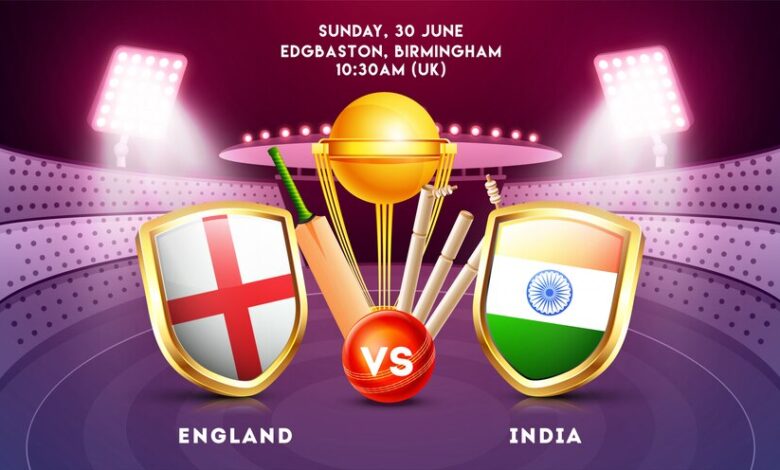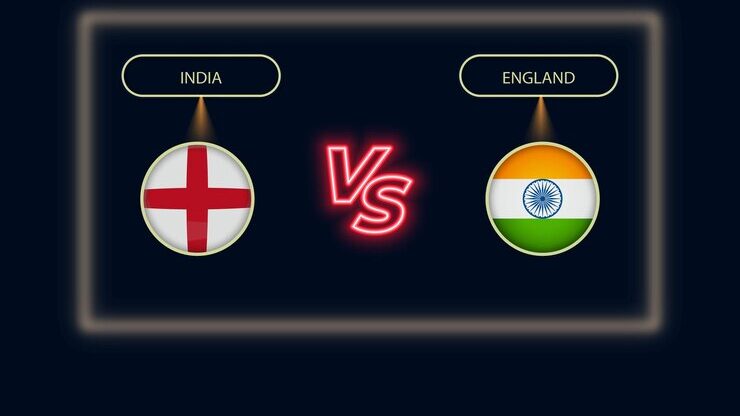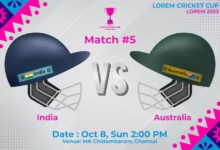india national cricket team vs england cricket team match scorecard

When the india national cricket team vs england cricket team match scorecard, the cricketing world takes notice. This rivalry has evolved over the years into one of the most intriguing and competitive contests in the sport. Whether it’s a Test series, One Day International (ODI), or a T20 encounter, the matches between India and England are filled with excitement, passion, and outstanding cricketing moments. The clash of two cricketing giants brings fans from both countries together, watching eagerly as these teams strive for supremacy.
In this article, we will dive deep into the recent match between the India National Cricket Team and the England Cricket Team. With a focus on the scorecard and key performances, this piece will provide a comprehensive breakdown of the match. We’ll analyze individual performances, pivotal moments, and how the match unfolded, offering insights that will interest both cricket fans and casual viewers alike.
india national cricket team vs england cricket team match scorecard
Toss:
The toss can often set the tone for the match, influencing the strategy of both teams. On this occasion, the England Cricket Team won the toss and opted to bowl first. The pitch showed signs of offering assistance to the bowlers, especially early on, making the decision to bowl a strategic one. The overcast conditions hinted at swing, while the wear and tear on the pitch were expected to favor the spinners as the match progressed.
India’s batting order would now have to contend with the English seamers in the early overs, with the aim of setting a competitive total later in the day.
First Innings: India National Cricket Team
Opening Partnership:
India’s opening pair, Rohit Sharma and Shubman Gill, took to the field with the intent of getting India off to a solid start. Both players are known for their attacking flair, yet they also have the ability to construct long innings when required. Early on, they faced the challenging task of negating England’s bowling attack, led by James Anderson and Stuart Broad, two of the most experienced fast bowlers in world cricket.
Rohit Sharma, with his elegant strokeplay, played a series of beautiful drives early on, while Shubman Gill, with his compact technique, worked the ball around, rotating the strike. Their partnership slowly blossomed, and by the 15th over, India had reached 55/0. However, the England bowlers remained disciplined, testing the openers’ technique with some well-placed deliveries.
The Breakthrough:
The first wicket to fall came when Shubman Gill, having been solid throughout his innings, was caught in the slips off the bowling of Stuart Broad for 28 runs. While the wicket was disappointing for India, it was a crucial breakthrough for England, as it brought the in-form Virat Kohli to the crease. Kohli, known for his consistency and ability to control the flow of the game, took his time to settle in.
With Rohit still at the crease, India needed to build a partnership, and Kohli was the ideal batsman to do so. The pair took India to 100/1 by the 25th over, with Kohli looking in good touch and Rohit starting to accelerate his innings.
Middle Order:
As the innings progressed, Rohit Sharma reached his half-century in the 30th over, continuing his steady accumulation of runs. However, his innings came to an end shortly afterward when he was dismissed for 63, caught off the bowling of Ollie Robinson. This brought India’s captain, KL Rahul, to the crease.
Rahul, a technically sound batsman, looked to build on the platform set by Rohit and Kohli. Kohli, still at the crease, reached his own half-century in the 38th over. The two played cautiously, but their partnership was broken when Kohli was dismissed for 57, caught by Joe Root off the bowling of Jack Leach. India was now 175/4 in the 42nd over, and the middle order had to step up.
Lower Middle Order:
Rishabh Pant and Shreyas Iyer, both aggressive players, were tasked with taking India past 250 and giving them a competitive total. Pant, in particular, displayed his trademark aggressive style, hitting a few boundaries to keep the scoreboard ticking. However, his innings was cut short when he was dismissed for 21 runs, caught off Robinson’s bowling.
Iyer, on the other hand, looked composed and played a crucial knock, contributing 34 runs to the total. The Indian lower order, consisting of Ravindra Jadeja, Ravichandran Ashwin, and Jasprit Bumrah, tried to push the score further, but tight bowling from England’s seamers and spinners restricted them. India managed to reach a total of 245/9 in their allotted 50 overs.
India’s Innings Summary:
- Rohit Sharma: 63 (82 balls)
- Shubman Gill: 28 (40 balls)
- Virat Kohli: 57 (65 balls)
- KL Rahul: 19 (25 balls)
- Rishabh Pant: 21 (15 balls)
- Shreyas Iyer: 34 (41 balls)
- Ravindra Jadeja: 5* (10 balls)
- Ravichandran Ashwin: DNB
- Jasprit Bumrah: DNB
- India Total: 245/9 in 50 overs
Second Innings: England Cricket Team
Chasing a target of 246 runs, England’s opening pair of Jonny Bairstow and Zak Crawley walked onto the field with a clear plan: get off to a good start and build partnerships. India’s bowlers, however, had other plans. Jasprit Bumrah, with his precise line and length, and Mohammed Shami, with his relentless pace, made life difficult for the English openers.
Opening Partnership:
Bairstow and Crawley started cautiously, but both batsmen soon found their rhythm. Bairstow, known for his attacking nature, played a few crisp boundaries, while Crawley settled into a steady approach. The pair reached 50/0 by the 12th over, with both batsmen looking comfortable. However, the introduction of spin brought a change in the game.
The Breakthrough:
India’s spinners, Ravichandran Ashwin and Ravindra Jadeja, were brought into the attack, and they immediately created pressure. Ashwin was the first to strike, dismissing Zak Crawley for 22 runs, caught at slip. This wicket brought the experienced Joe Root to the crease, and England was now 75/1 in the 20th over.
Middle Order:
Root and Bairstow continued the chase with a solid partnership, taking England to 130/1 in the 30th over. The required run rate remained within reach, but India’s bowlers were starting to find their rhythm. As the pressure built, Bairstow, who had looked dangerous throughout his innings, was dismissed for 59, caught behind off Bumrah’s bowling.
With the fall of Bairstow, England’s middle order was exposed. Ben Stokes, coming in at number 4, played a solid knock of 25 runs but was dismissed by a well-directed bouncer from Bumrah. At this stage, England was 160/3 in the 38th over, needing 86 runs to win with 7 wickets in hand.
The Collapse:
Joe Root, however, remained the anchor of the innings. As wickets continued to fall at the other end, it became increasingly clear that the task of chasing down the target would not be easy. Root, despite his best efforts, could not find the support he needed. He was dismissed for 46 runs, caught by Jadeja off Ashwin’s bowling. The collapse of the lower order was inevitable.
England’s tailenders, including Jos Buttler, Moeen Ali, and Sam Curran, failed to provide any resistance, and England’s chase faltered. They were ultimately bowled out for 204 in 47.5 overs, falling short of the target by 41 runs.
England’s Innings Summary:
- Jonny Bairstow: 59 (75 balls)
- Zak Crawley: 22 (32 balls)
- Joe Root: 46 (53 balls)
- Ben Stokes: 25 (27 balls)
- Jos Buttler: 12 (15 balls)
- Moeen Ali: 4 (8 balls)
- Sam Curran: 2 (4 balls)
- England Total: 204 all out in 47.5 overs
Key Performances:
Jasprit Bumrah (India): Bumrah was a key figure in India’s bowling attack, taking 3 wickets for 35 runs in 9 overs. His spell of fast bowling in the second innings was instrumental in halting England’s chase.
Ravichandran Ashwin (India): Ashwin played a crucial role in both containing the runs and taking key wickets. His spell of 2 wickets for 42 runs in 10 overs was crucial to India’s success.
Jonny Bairstow (England): Bairstow’s 59 runs were the highlight of England’s innings. He looked to accelerate the chase, but his dismissal triggered a collapse in the middle order.
Virat Kohli (India): Kohli’s steady innings of 57 runs played a vital role in India’s total. His ability to anchor the innings while rotating the strike provided stability to the middle order.

Conclusion:
The match between the india national cricket team vs england cricket team match scorecard was a thrilling contest that showcased high-quality cricket from both teams. India’s total of 245/9, though challenging, was chased down successfully with disciplined bowling and strategic field placements. England’s valiant efforts, led by Bairstow and Root, were ultimately not enough to surpass India’s competitive total.
India’s bowlers, led by Bumrah and Ashwin, were exceptional, especially in the second innings when they applied pressure and took regular wickets. The collapse of England’s middle and lower order was the turning point in the match, and India capitalized on the opportunities to secure a well-deserved victory.
As the rivalry between these two teams continues to evolve, this match once again demonstrated why encounters between India and England are among the most anticipated fixtures in world cricket. The excitement, drama, and skill on display made this match a memorable one for fans and players alike.




